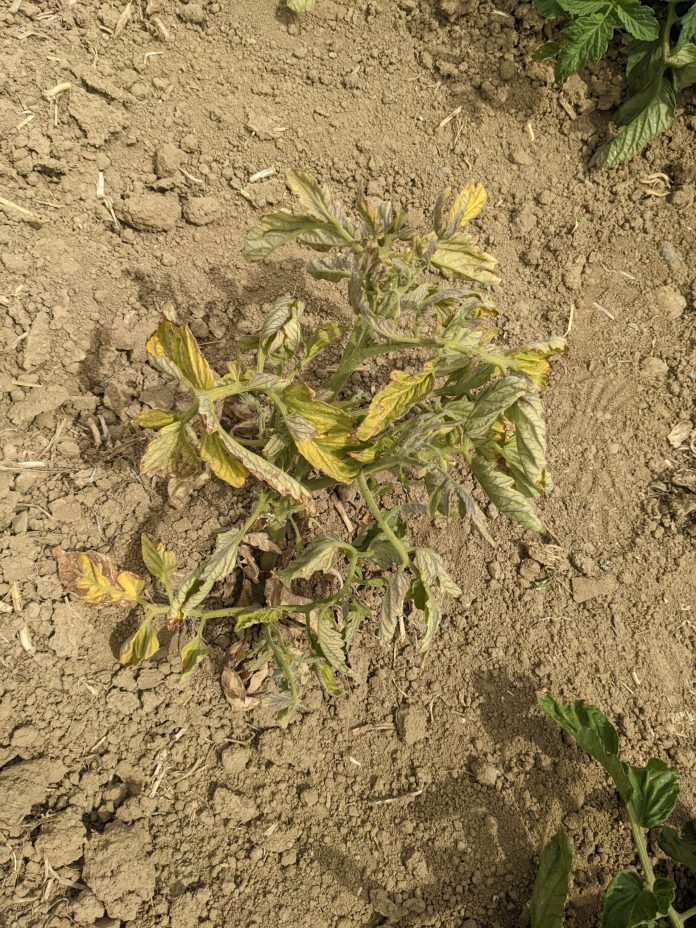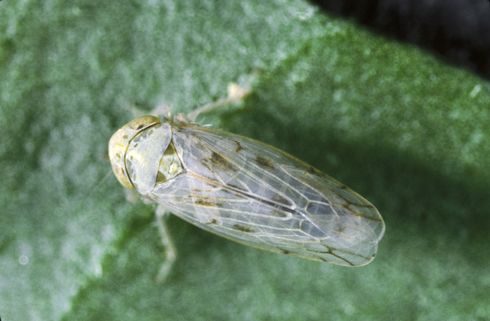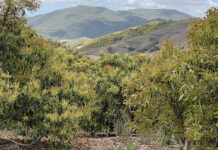

An unusual strain of beet curly top virus (BCTV) has been confirmed in Colusa County this growing season. This new outbreak follows an outbreak last year, possibly due to the drier conditions which resulted in the vector of the disease, beet leafhopper, migrating into processing tomato fields earlier than usual.
UCCE Colusa County Farm Advisor Amber Vinchesi-Vahl said that BCTV is not normally a serious issue in processing tomatoes in the northern tomato growing regions. She noted that the confirmed virus strain was different than the strain found in Fresno and Kern counties.
Some damage to fruit and plants occurs when beet leafhopper nymphs and adults feed in tomato fields, but the main issue is vectoring BCTV.
Vinchesi-Vahl , in the Vegetable Crops newsletter, said that other insects cannot transmit the virus to tomatoes. The virus is not transmitted or spread by seed, touch or machinery.

Curly top-infected plants turn yellow and stop growing. Leaves roll upward and turn purplish. Leaves and stems become stiff. Spring plantings are the most susceptible as beet leafhopper migrates from overwintering host plants when they become dry. The west side of the San Joaquin Valley is where most infections occur.
Vinchesi-Vahl said that beet leafhoppers do not complete their life cycle in a tomato field. They migrate in, feed and then move on to preferred hosts, including sugarbeets. For this reason, it is not likely that beet leafhoppers will be visible in field inspections.
When beet leafhoppers migrate out of the field, that ends the virus transmission. The infected plants, particularly the earliest infected, will die. There will be a mix of plants with different stages of the virus resulting from multiple flights of beet leafhopper into the field.
Managing surrounding weed hosts around tomato fields may be helpful in reducing sources of the virus. The UC IPM Guidelines say that insecticides applied to infested fields to control beet leafhopper and reduce the spread of the curly top pathogen may prevent some infield spread, although infected plants will not recover. In areas that are at annual risk of beet leafhopper infestations, application of a systematic insecticide may have some impact. Beet leafhopper populations are greatest in years with rainfall that promotes growth of its weed hosts in the foothills.
Growers are asked to be on the lookout for BCTV in tomato fields and to contact Vinchesi-Vahl at acvinchesi@ucanr.edu if high incidence is found.




















